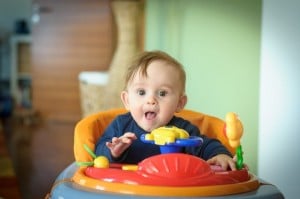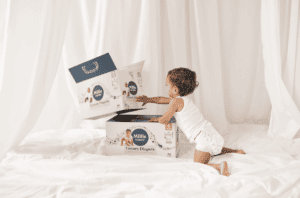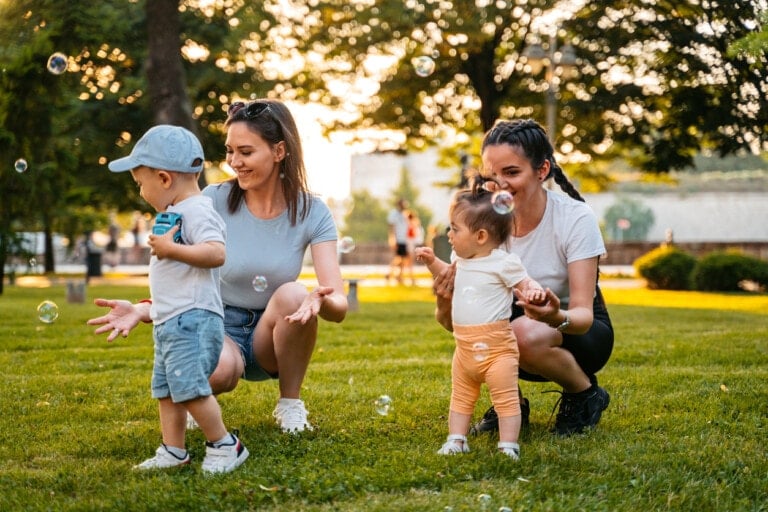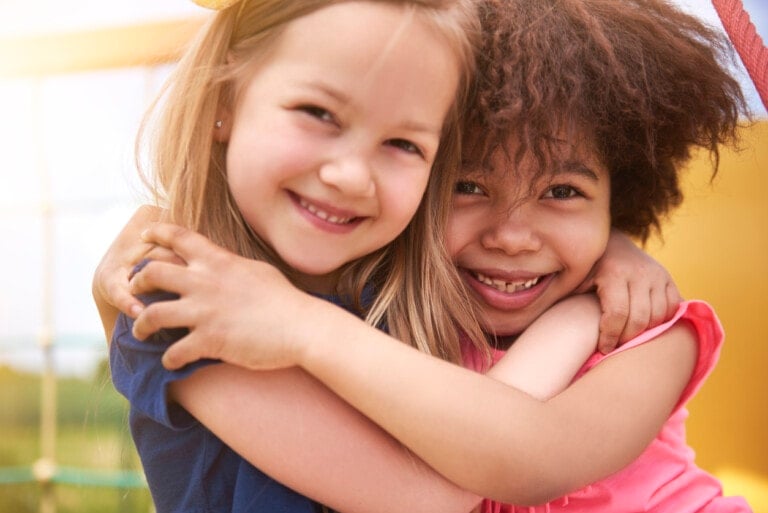“Mum, come quick. My polar bear hurt its knee, and I’m going to fix it!” My daughter has a wonderfully vivid imagination. Watching her play doctors with her stuffed toys got me thinking about the purpose of playing dress-up in childhood.
Most children will instinctively role-play or use their imaginations to project themselves as a wide range of characters during their early years. Although we as adults see it as a bit of fun and make-believe, it also serves a few other purposes for our kids.1 When our children play dress up, it engages many different facets of their development: emotional, cognitive, sensory, motor skills (gross and fine), and language/communication skills. So, if we can set up the right opportunities and resources in our children’s dress-up chest, we can also offer them ample opportunities to grow and learn.
Why Your Child Needs a Dress-Up Chest
So how does dressing up have such a significant impact?
They are processing their day.
Our children use their own experiences as reference points when they play. It sounds fancy but simply put, they play what they know. So, they will likely give you clues about their day or how they see their world when they play. Kids also use play to think about and process their day. They also go over the challenging bits, work through conflict, and practice skills or new ideas.
They are exploring their personalities.
Because open-ended play, or free play (not a structured game or activity), has no particular goal, our children can explore their inner workings without judgment. So, when they play dress-up, they can access different parts of their personality to create characters. It helps them get a feel for what makes them comfortable regarding attitudes, behaviors, etc., by taking on different personas.
It helps their language development.
When our children take on characters during play, they also modulate their words and communication styles to “fit” better with their idea of who the character is. Without a formal lesson, their character development leads them to experiment with new phrasing or speech patterns. This practice can help them with overall increased skills in using language.
They’re practicing motor skills.
While dressing up is fun, our kids don’t realize they are also exercising (using gross motor skills) while playing. They also strengthen their fine motor skills when they grapple with zips, buttons, Velcro, and ties on their dress-up clothes.
It helps them learn empathy.
Our kids learn empathy by practicing being someone else. They immerse themselves in another person’s experience. This ability to consider what it might be like in “someone else’s shoes” is the building block of empathy.
How can I set up my child’s dress-up chest to maximize the benefits during play?
Setting up a dress-up chest doesn’t have to be expensive. Get creative and use alternative materials or imagination to create props. For example, cut and glue cardboard to create a crown. Or use old clothes from your closet. You can also ask family or friends to donate old jewelry (of the costume variety, of course!). Finally, visit a local second-hand store for materials or outfits.
Include costumes and props that help them complete their character.
What I mean by this is to include a simple white coat and a stethoscope (you can find some great craft instructions online to make a set at home). Then add some Band-Aids or gauze pads to replicate the character of a doctor.
Make the dress-up box/chest visible and easy to access for your child. If they can see it, they are likelier to play dress-up spontaneously.
To support empathy, ensure that you include costumes associated with “helping” professions, such as:
If you choose to have some of these character costumes, it encourages your child to get into the mindset of someone who helps others for a living. It allows them to practice nurturing and providing care for others.
Some dress-ups may be gendered (either by colors or societal expectations). This can stop our kids from exploring different roles because of expectations about what “boys versus girls do.” We want to avoid this because our kids don’t get to try different skills or stretch their empathy and emotional intelligence. So, try and provide an extensive range of costumes for your child to select from. Use real clothes, different professions (empathic ones as listed above, construction workers, hairdressers, shops/shop assistants, scientists, etc.), and imaginative/make-believe characters (superheroes, unicorns, witches, etc.).
However you do it, your kid will love the opportunity to use their imagination in wildly creative ways. And you will be helping them to develop a wide range of important life skills.































